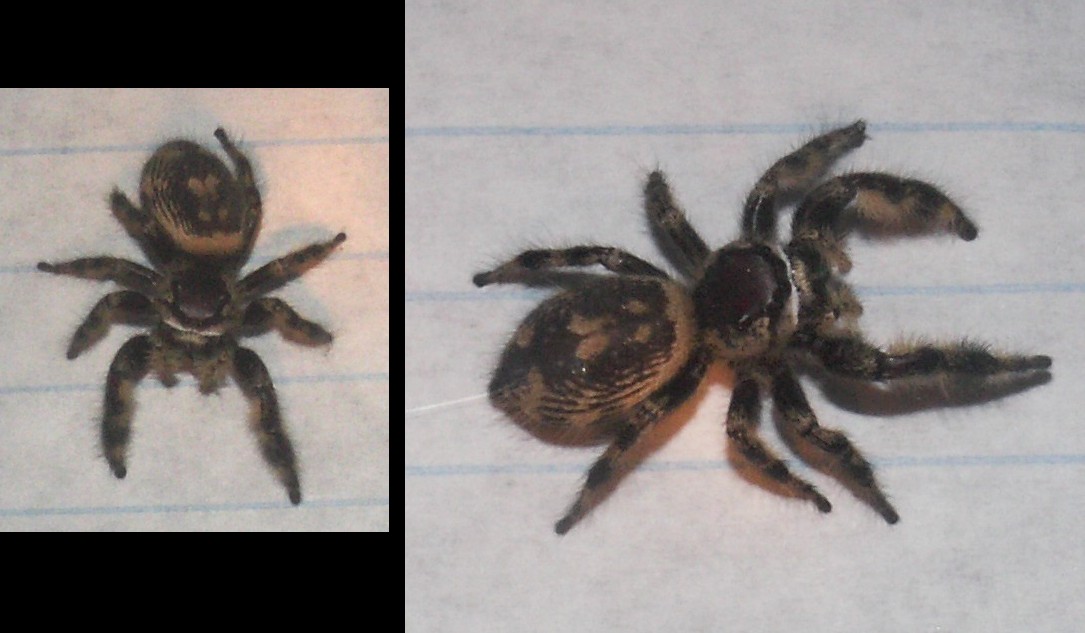Critters of the Evening

Merry Melipotis Moth, Melipotis jucunda, Family Erebidae (or Noctuidae, depending on whom you check). I photographed this little one (about an inch long) shortly after 7 PM on the window of our local post office. The bottom two shots show the underside, taken from inside the post office. The reflected flash of red in the top shot is my walking light. More detail (especially relevant for the top shot) is in the large view. Thanks to Bob Patterson at Bugguide.Net for the ID.
Based on text from the University of Alberta, I believe this is a male. Habitat (at least in Alberta) is wooded riparian shrub. Life history is poorly known, according to the university, which adds, "There is a single brood each year, with adults flying in late spring [I assume in Alberta]. Adults are nocturnal and come to light." Caterpillars eat willow (Salix), catclaw (Acacia) and oak (Quercus). This species ranges from the southern USA and north to New Jersey, the southern Prairie Provinces, and Vancouver Island.
Not far from the Merry Melipotis perched a much smaller Wine-tinted Oenobotys....

Oenobotys vinotinctalis, Family Crambidae (Crambid Snout Moths). Only about a quarter-inch long, this one showed up large enough in my viewfinder for me to identify the family as Crambidae because I could see its snout. Thanks to Eric Haley at Bugguide.Net for the ID.
This species ranges from North Carolina to Florida, west to Texas, and also occurs in Mexico and Central America.
On our way to the post office, I captured this female jumping spider from the inside top of our neighbor's front door frame and escorted her outside for a photo shoot on wide-ruled notebook paper.

Phidippus otiosus, Family Salticidae (Jumping Spiders). At about 20mm long this is the largest Salticidae I've come across so far. More detail is in the large view.
I knew this was a Salticidae from the way she was moving. Thanks to these folks at Bugguide.Net for helping me narrow down the ID: Herschel Raney for pointing me toward the genus Phidippus, and Jay Barnes and Jeff Hollenbeck for identifying the species otiosus.
Professor Wayne Maddison (University of British Columbia) explains that the excellent vision of jumping spiders "allows them to hunt much as do cats, spotting prey from long distances, creeping up then pouncing using their jumping ability. Although a jumping spider can jump more than fifty times its body length, none of its legs has enlarged muscles. The power for jumping probably comes from a quick contraction of muscles in the front part of the body increasing the blood pressure, which causes the legs to extend rapidly much as in the toy frogs that hop when you squeeze a bulb."
Maddison continues, "The brain of a jumping spider includes a comparatively large region for visual processing. In fact, the brain of a small jumping spider may take up about the same volume in proportion to its body as does ours."











1 Comments:
These images have that dream-like quality of strangeness, of being almost more real than life, of having deeper meaning that is slightly obscured, just beyond cognition.
Post a Comment
<< Home